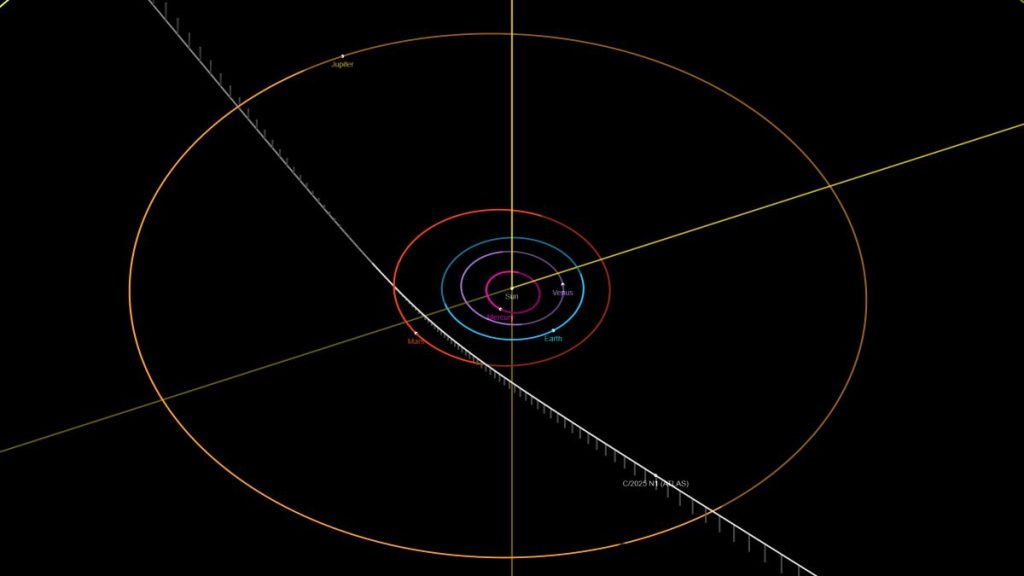Astronomers say the finding is a major advance in understanding how comets and planets form across the Galaxy.
Others are reading now
A NASA space telescope has made an unexpected discovery at comet 3I/ATLAS, revealing traces of water in a place where none should exist.
A rare visitor
Comet 3I/ATLAS, discovered on 1 July 2025, is only the third known interstellar comet ever observed.
Unlike most comets that orbit the Sun, this one entered our Solar System from another star system and will leave it again once its path carries it back into interstellar space.
At an estimated age of seven billion years, 3I/ATLAS is thought to be twice as old as Earth.
Scientists believe it holds chemical clues to the environment where it first formed, making its study crucial for understanding the origins of other planetary systems.
Also read
Water found far from the sun
Using NASA’s Neil Gehrels Swift Observatory, a team from Auburn University in Alabama detected a faint ultraviolet glow of hydroxyl gas, a chemical signature that indicates water vapour.
The discovery was made when the comet was almost three times farther from the Sun than Earth, a distance at which most comets remain inactive.
Measurements showed that 3I/ATLAS was losing about 40 kilograms of water every second. Astronomers say this level of activity so far from the Sun is highly unusual.
One explanation is that sunlight is warming tiny icy particles released from the comet’s surface, causing them to vaporise and feed the surrounding cloud of gas.
Clues to planet formation
Finding water in an interstellar comet allows researchers to compare it with comets from our own Solar System.
Also read
The result suggests that the chemistry of other planetary systems may not be so different from our own.
“When we detect water, or even its ultraviolet echo, from an interstellar comet, we are reading a message from another planetary system,” said Dennis Bodewits, professor of physics at Auburn University. “It shows that the ingredients for life’s chemistry are not unique to us.”
Zexi Xing, lead author of the study, added that every interstellar comet so far has changed scientific understanding.
“Oumuamua was dry, Borisov was rich in carbon monoxide, and now ATLAS is releasing water where we did not expect it. Each one rewrites what we know about how planets and comets form.”
Next observations
Although 3I/ATLAS has now faded from view, it is expected to become visible again after mid-November 2025.
Also read
Astronomers hope to continue monitoring its activity as it nears the Sun, using both the James Webb and Hubble space telescopes to track how its chemical makeup evolves.
Sources: NASA, Auburn University, BBC Sky at Night, Reuters


